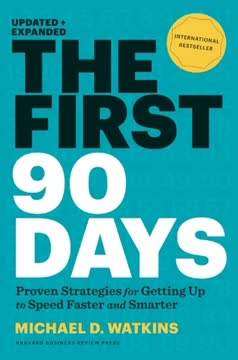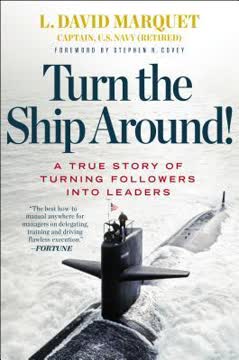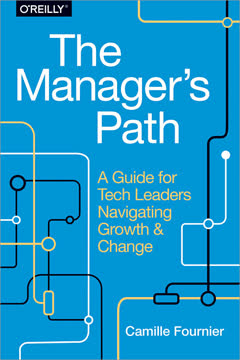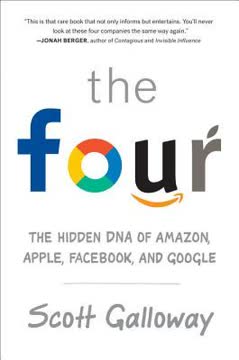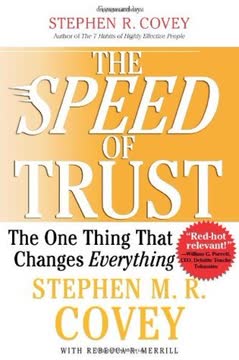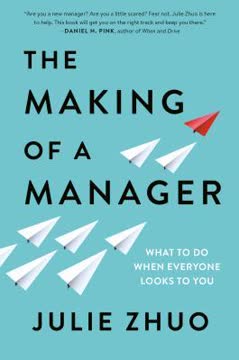重点摘要
1. 通过定期一对一会议建立与团队的牢固关系
“经理工具的一对一会议不是‘随便聊聊’、‘非正式地互相了解’或‘快速更新’的机会。”
一对一会议的目的: 这些会议是结构化的、以业务为中心的对话,旨在建立信任和提高绩效。它们应当:
- 每周安排一次,持续30分钟
- 与每位直接下属举行
- 主要关注直接下属的议程
- 由经理记录会议笔记
格式:
- 前10-15分钟:直接下属发言
- 接下来的10-15分钟:经理发言
- 最后5-10分钟(如果有时间):讨论未来计划或大局事项
好处:
- 改善沟通和信任
- 定期提供反馈和指导的机会
- 减少一周内的打扰
- 更好地了解团队成员的优势和挑战
2. 提供有效反馈以鼓励未来行为
“绩效沟通(因此反馈)的目的是鼓励有效的未来行为。”
经理工具反馈模型:
- 请求给予反馈的许可
- 陈述观察到的行为
- 描述行为的影响
- 鼓励有效的未来行为或表达感谢
关键原则:
- 关注具体、可观察的行为,而非态度或意图
- 及时——在事件发生后尽快提供反馈
- 简洁——每次反馈控制在15-30秒
- 使用中立的语气,避免愤怒或评判
示例:
- 积极的反馈:“当你加班帮助新员工时,表现出了很好的团队合作精神。谢谢。”
- 建设性的反馈:“当你在会议中打断别人时,会打乱会议进程。你能否在别人说完之前先听完?”
3. 指导团队成员提高绩效
“指导是‘管理三位一体’中最少使用的工具。”
经理工具指导模型:
- 合作设定目标(使用DBQ:截止日期、行为、质量)
- 共同头脑风暴资源
- 制定短期行动计划
- 定期报告进展并采取行动
有效的指导实践:
- 关注具体的技能或行为改进
- 设定明确、可衡量的目标,并有现实的截止日期
- 将大目标分解为小的、可操作的步骤
- 在一对一会议中提供定期检查和反馈
- 根据进展和挑战调整计划
好处:
- 提高个人和团队绩效
- 增加员工的参与度和动力
- 培养组织内的未来领导者
4. 委派职责以发展团队和自己
“学习委派是成为高管转型的一部分。”
委派的重要性:
- 让经理专注于更高层次的职责
- 培养团队成员的技能和信心
- 为经理和团队的未来发展做准备
有效的委派策略:
- 从较小的任务开始,逐步增加责任
- 提供明确的指示和期望
- 根据需要提供支持和资源
- 定期跟进以确保进展并提供反馈
- 抵制微观管理或收回委派任务的冲动
克服委派挑战:
- 信任团队成员的能力
- 接受他们的方法可能与自己不同
- 将错误视为学习机会
- 认识到短期低效会带来长期收益
5. 作为经理优先考虑结果和保留
“有效经理的定义是能够取得成果并留住员工。”
关键职责:
- 实现组织目标和任务
- 保留有才华的团队成员
实现结果的策略:
- 设定与组织优先事项一致的明确、可衡量的目标
- 定期沟通期望和进展
- 提供必要的资源和支持
- 让团队成员对他们的承诺负责
改善保留的策略:
- 通过一对一会议建立牢固关系
- 提供成长和发展的机会
- 认可和感谢优秀工作
- 及时和公平地解决问题
- 创建积极的团队文化
平衡: 认识到过度追求结果可能会对保留产生负面影响,而仅关注保留可能会影响结果。努力实现两者的平衡。
6. 清晰沟通绩效期望
“你的首要责任是交付组织对你的期望。”
设定明确的期望:
- 为每个角色确定关键绩效指标(KPI)
- 以书面形式沟通目标和标准
- 在一对一会议和团队会议中讨论期望
- 提供成功的具体示例
监控和讨论绩效:
- 使用定期检查评估进展
- 提供及时的反馈(包括积极和建设性)
- 及时解决绩效问题
- 庆祝成功和里程碑
文档:
- 记录绩效讨论的笔记
- 记录具体的优秀和不良绩效实例
- 将这些记录用于正式评审和发展规划
7. 通过一致和有目的的互动建立信任
“通常,团队对经理的信任越高,结果越好,保留率也越高。”
建立信任:
- 言行一致
- 履行承诺
- 展现脆弱性并承认错误
- 积极倾听团队成员的关切和想法
- 在适当时保持保密
建立信任的机会:
- 一对一会议
- 团队会议
- 非正式互动
- 挑战性情境或冲突
高信任的好处:
- 改善沟通和协作
- 增加冒险和创新的意愿
- 更高的参与度和承诺
- 更快的问题解决和决策
8. 平衡正面和负面反馈以获得最佳效果
“正面反馈比负面反馈更强大。不要等到职业生涯结束才意识到这一点。”
反馈比例:
- 目标是3:1或4:1的正面与负面反馈比例
- 积极寻找提供正面反馈的机会
正面反馈策略:
- 具体说明行为及其影响
- 将行为与组织目标或价值观联系起来
- 鼓励继续积极行为
建设性反馈策略:
- 关注行为,而不是个人
- 解释行为的影响
- 合作寻找改进的解决方案
- 跟进以确保变化并提供支持
时机:
- 在观察到行为后尽快提供正面和负面反馈
- 在一对一会议中进行更详细的绩效讨论
9. 使用结构化方法设定目标和指导
“经理工具将指导定义为系统性努力,以提高直接下属在特定技能领域的绩效。”
DBQ目标设定框架:
- 截止日期:目标应在何时实现?
- 行为:需要改进的具体行动或技能是什么?
- 质量:如何衡量成功?
示例: “到3月1日(截止日期),你将在每周运营会议中至少发言五次(质量),而不打断他人(行为)。”
指导过程:
- 确定需要改进的技能或行为
- 使用DBQ设定明确、可衡量的目标
- 头脑风暴潜在资源和策略
- 制定短期行动计划,包含具体任务
- 监控进展并提供定期反馈
- 根据结果调整计划
成功的关键:
- 将大目标分解为小的、可操作的步骤
- 为初始任务设定短期截止日期(1-3天)以建立动力
- 利用各种学习方法(阅读、指导、实践)
- 庆祝小胜利和进展
10. 随着职业发展调整管理风格
“迈克意识到他个人能够做更多,因为他自己在过程中被赋予了更多的信任。”
职业进阶转变:
- 个人贡献者 → 经理:重点从个人产出转向团队结果
- 经理 → 高管:重心从战术思维转向战略思维
关键调整:
- 随着职业发展委派更多职责
- 培养团队成员承担更大角色
- 建立跨组织的关系
- 专注于长期规划和大局思维
- 花更多时间在沟通和对齐上
克服挑战:
- 抵制放弃熟悉任务的抵触情绪
- 克服失去控制或相关性的恐惧
- 信任他人处理重要职责的困难
成功策略:
- 积极寻找委派和培养他人的机会
- 庆祝团队成功而非个人成就
- 投资时间指导和培养高潜力团队成员
- 不断学习并适应新的领导挑战
- 建立同行支持和指导网络
最后更新日期:
FAQ
What's "The Effective Manager" by Mark Horstman about?
- Focus on People Management: The book is centered on managing people effectively, rather than focusing on broader organizational strategies like finance or change management.
- Actionable Guidance: It provides practical, step-by-step advice for managers to improve their skills in managing direct reports.
- Core Responsibilities: The book emphasizes achieving results and retaining employees as the primary responsibilities of a manager.
- Manager Tools Framework: It introduces the Manager Tools framework, which includes specific tools and behaviors to enhance managerial effectiveness.
Why should I read "The Effective Manager"?
- Practical Advice: The book offers actionable steps that managers can implement immediately to improve their effectiveness.
- Focus on Results and Retention: It provides a clear framework for achieving the dual goals of delivering results and retaining team members.
- Proven Methods: The guidance is based on data and extensive testing with thousands of managers, ensuring its reliability and effectiveness.
- Comprehensive Approach: It covers a wide range of managerial skills, from communication to delegation, making it a valuable resource for both new and experienced managers.
What are the key takeaways of "The Effective Manager"?
- Four Critical Behaviors: The book outlines four key behaviors for effective management: Get to Know Your People, Communicate about Performance, Ask for More, and Push Work Down.
- Manager Tools: It introduces specific tools like One On Ones, Feedback, Coaching, and Delegation to implement these behaviors.
- Focus on Relationships: Building strong relationships with direct reports is emphasized as a foundation for effective management.
- Sustainable and Teachable: The methods are designed to be teachable to others and sustainable over time, ensuring long-term success.
What is the Manager Tools Feedback Model?
- Four Steps: The model consists of four steps: Ask, State the Behavior, State the Impact, and Encourage Effective Future Behavior.
- Purpose: The goal is to encourage effective future behavior rather than focusing on past mistakes.
- Positive and Negative Feedback: The model is used for both positive and negative feedback, maintaining a consistent approach.
- Scripted Approach: It provides a scripted method to help managers deliver feedback effectively and consistently.
How do One On Ones work in "The Effective Manager"?
- Scheduled Meetings: One On Ones are scheduled, weekly 30-minute meetings with each direct report.
- Direct's Agenda First: The direct's issues are prioritized, with the manager taking notes to ensure follow-up.
- Builds Relationships: These meetings are designed to build trust and improve communication between managers and their teams.
- Proven Benefits: Regular One On Ones have been shown to improve both results and retention significantly.
What is the Delegation Cascade in "The Effective Manager"?
- Workload Management: The Delegation Cascade is a method for managing workload by delegating tasks down the organizational hierarchy.
- Delegating Small Tasks: Managers should delegate smaller tasks to their directs, rather than large responsibilities, to avoid overwhelming them.
- Organizational Growth: This approach supports organizational growth by allowing managers to focus on higher-level responsibilities.
- Cascading Effect: As tasks are delegated down, each level of the organization becomes more efficient and effective.
How does "The Effective Manager" define an effective manager?
- Results and Retention: An effective manager is defined as one who achieves results and retains their people.
- Focus on People: The book emphasizes the importance of managing people effectively to achieve these goals.
- Clear Responsibilities: Managers are responsible for delivering results and ensuring their team members are satisfied and engaged.
- Measurable Success: Success is measured by both the outcomes achieved and the retention of team members.
What are the Four Critical Behaviors in "The Effective Manager"?
- Get to Know Your People: Building strong relationships with direct reports is crucial for effective management.
- Communicate about Performance: Regular feedback and communication about performance are essential for improvement.
- Ask for More: Managers should continually encourage higher levels of performance from their team.
- Push Work Down: Delegating tasks effectively allows managers to focus on higher-level responsibilities.
How does "The Effective Manager" suggest handling resistance to One On Ones?
- Common Pushbacks: The book addresses common objections such as perceived micromanagement and lack of time.
- Role Power: Managers are encouraged to use their role power judiciously to insist on the importance of One On Ones.
- Building Trust: Overcoming resistance involves building trust and demonstrating the value of these meetings.
- Long-term Benefits: Emphasizing the long-term benefits of improved communication and relationships can help mitigate resistance.
What is the Coaching Model in "The Effective Manager"?
- Four Steps: The Coaching Model includes Collaborate to Set a Goal, Collaborate to Brainstorm Resources, Collaborate to Create a Plan, and The Direct Acts and Reports on the Plan.
- Collaborative Approach: The model emphasizes collaboration between the manager and the direct report throughout the process.
- Focus on Improvement: It is designed to help direct reports improve specific skills over a period of months.
- Short-term Tasks: The model uses short-term tasks and deadlines to drive behavior and ensure progress.
What are the best quotes from "The Effective Manager" and what do they mean?
- "Success at work is about what you do—you are your behaviors." This emphasizes the importance of actions over attitudes in achieving success.
- "The most important thing you can do as a manager is to develop a trusting relationship with the people on your team." This highlights the foundational role of trust in effective management.
- "If you implement Manager Tools One On Ones, we guarantee that you will get more time back in your calendar than you spend in having them." This underscores the efficiency and effectiveness of regular One On Ones.
- "Choose the harder right, instead of the easier wrong." This encourages managers to make ethical and challenging decisions for the benefit of their team and organization.
How does "The Effective Manager" address the issue of favoritism?
- Equal Treatment: The book emphasizes the importance of treating all directs equally, especially in the context of One On Ones.
- Friendly, Not Friends: Managers are advised to be friendly with their directs but not to form friendships that could lead to perceived favoritism.
- Professional Boundaries: Maintaining professional boundaries helps ensure that all team members feel valued and fairly treated.
- Focus on Performance: Decisions and interactions should be based on performance and professional criteria, not personal relationships.
评论
《高效经理人》因其实用的、数据驱动的管理方法而受到大多数好评。读者们欣赏其对四个关键行为的关注:一对一会议、反馈、辅导和授权。该书因其直截了当的建议和可操作的策略而备受赞誉,特别对新经理人非常有用。一些人批评其风格重复以及对远程工作的观点过时。总体而言,它被认为是学习基本管理技能的宝贵资源,尽管有些人建议结合其他领导力书籍以获得更全面的理解。
Similar Books

